PsychNewsDaily Publishers
100 Summit Drive
Burlington, MA, 01803
Telephone: (320) 349-2484
PsychNewsDaily Publishers
100 Summit Drive
Burlington, MA, 01803
Telephone: (320) 349-2484
Creating DIY cat toys from household items like paper, cardboard, and fabric keeps cats entertained, saves money, and provides enrichment tailored to their natural behaviors.
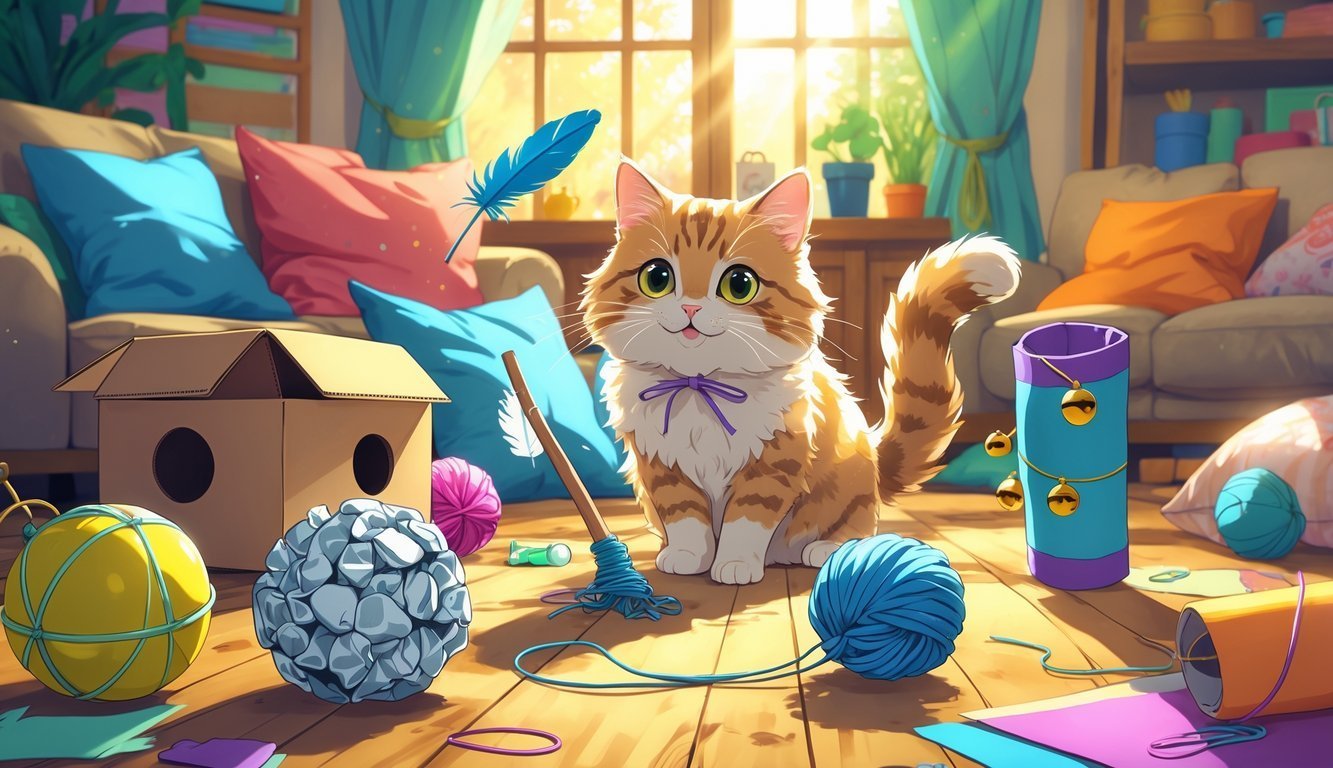
You don’t have to spend a dime to keep your cat entertained. Chances are, you already have plenty of safe and creative options just lying around the house.
Grab a few everyday items, and you’ll whip up simple toys that keep your cat busy, curious, and honestly, pretty happy.
You can use things like paper, fabric, and cardboard in surprisingly easy ways. No fancy skills needed—just a little time and some imagination.
Making your own toys saves money and lets you give your cat enrichment that matches what they naturally love to do.

Grab a wooden stick, some string, and a few feathers, and you’ve got what you need for a feather wand toy. It comes together fast and gives your cat a reason to chase and leap.
Reuse a dowel, chopstick, or any sturdy, smooth stick you have around. Tie one end of the string tightly to the stick. Make sure it’s long enough to keep your fingers safe from those enthusiastic paws.
Attach the feathers to the other end of the string. Tie them on, or use tape or glue if that’s easier. Colorful feathers seem to grab cats’ attention even more.
Once you finish, drag the wand across the floor or wave it in the air. Most cats can’t resist pouncing and batting at the feathers.
Always check that the feathers and string stay secure before each play session. You can tweak the length or add ribbons if you want to change things up.
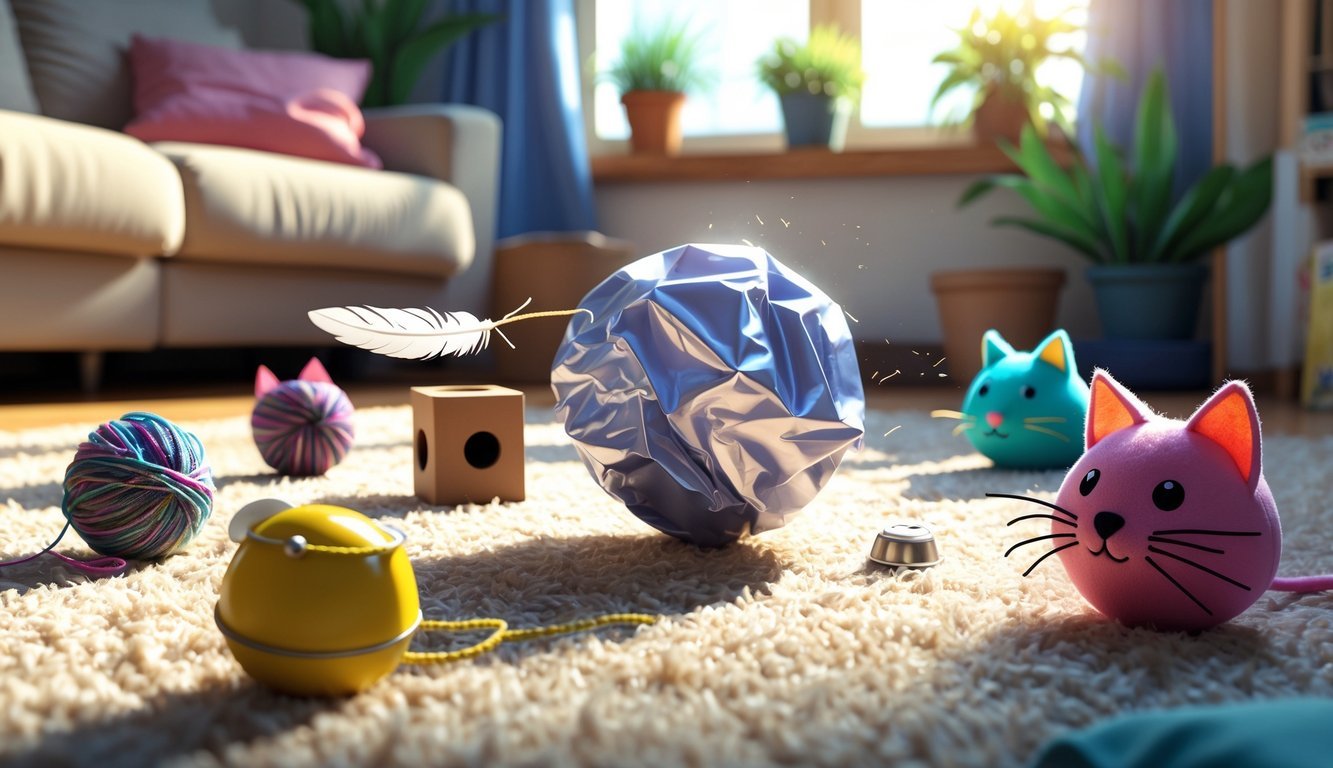
You don’t really need to buy anything for this one. Just take a sheet of scrap paper—junk mail, receipts, whatever—and crumple it into a small ball.
Aim for about golf ball size so your cat can bat it and carry it easily. Toss it across the floor and see if your cat goes after it.
Paper balls bounce and roll in random ways, which keeps the game unpredictable. Make a few at a time and swap them out if one gets shredded.
If the ball gets too chewed up, just recycle it and make another. Smooth floors work best since the ball rolls farther.
Keep an eye out if your cat starts chewing or tearing the paper, and replace the ball if needed.
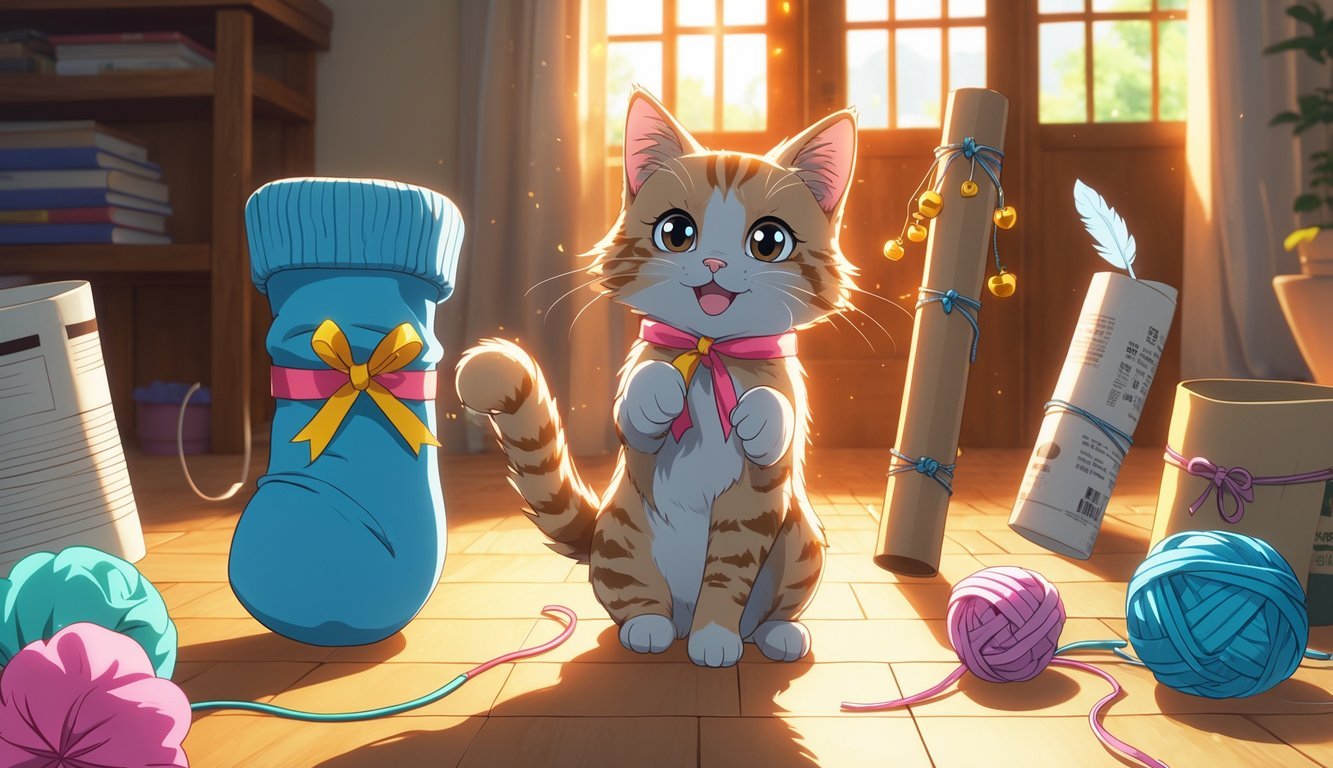
You can turn an old sock into a toy your cat will probably love. All you need is a clean sock, some dried catnip, and a way to tie it off.
Spoon a little catnip into the sock. Add some stuffing, fabric scraps, or even crumpled paper to give it shape, but don’t overfill—it should stay soft and squishy.
Tie a tight knot at the open end. If the sock is long, tie a knot in the middle too for extra grip spots.
Double-check that the knot holds so the catnip won’t spill out. If you feel like it, toss in a jingle bell or crinkle material, but only if it’s safe and can’t be swallowed.
This toy works because it combines that irresistible catnip scent with a soft, bite-friendly texture. Plus, you get to recycle old socks into something fun.
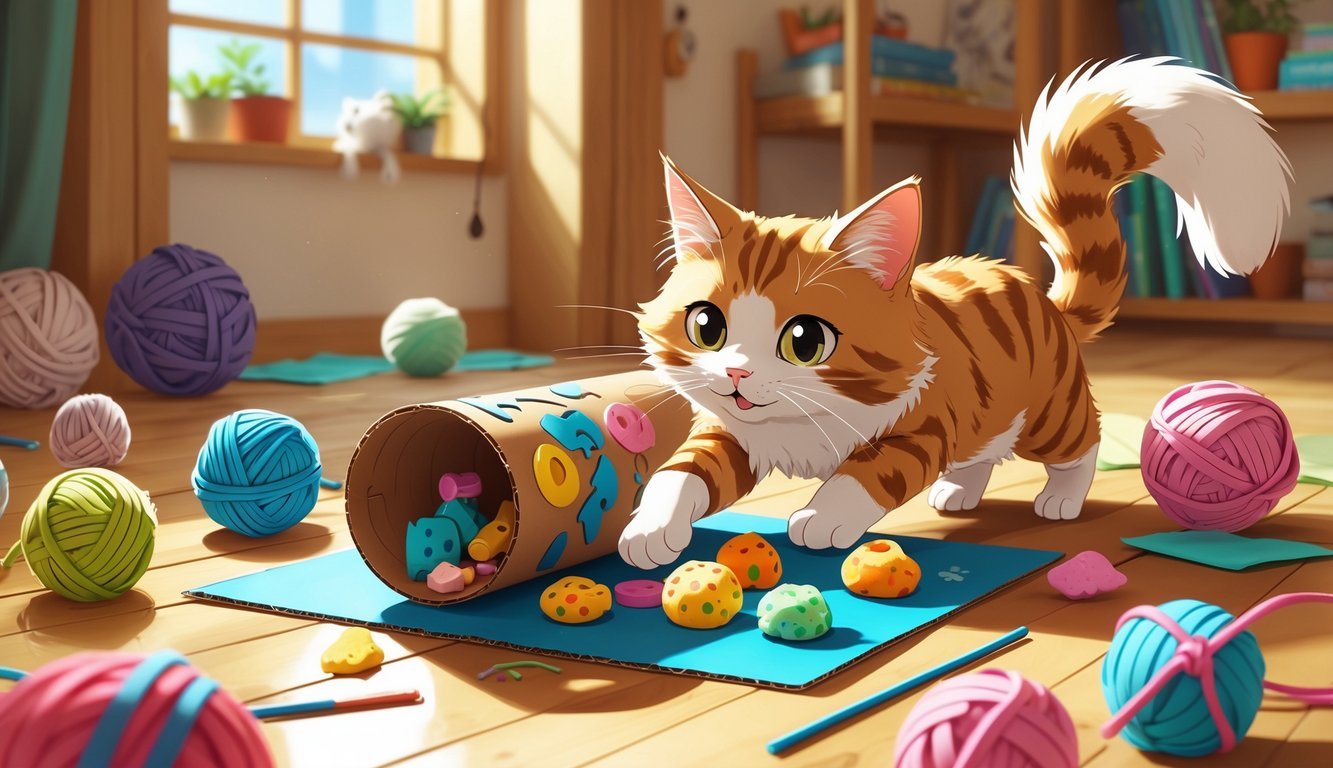
Grab an empty toilet paper or paper towel roll and turn it into a treat puzzle. You only need the tube and some of your cat’s favorite treats.
Fold one end of the tube inward to close it up. Drop in a few small treats or bits of dry food.
Fold the other end mostly closed, but leave little gaps so your cat can smell what’s inside. The scent will get their attention and make them want to play.
Your cat will bat and roll the tube, trying to get the treats out. It gives them a little mental workout and a tasty reward.
If you want to make it trickier, cut a few small holes in the sides. The treats will fall out slowly as your cat figures out the puzzle.
Make a few tubes at once and hide them around the house. It keeps things interesting and encourages your cat to explore.
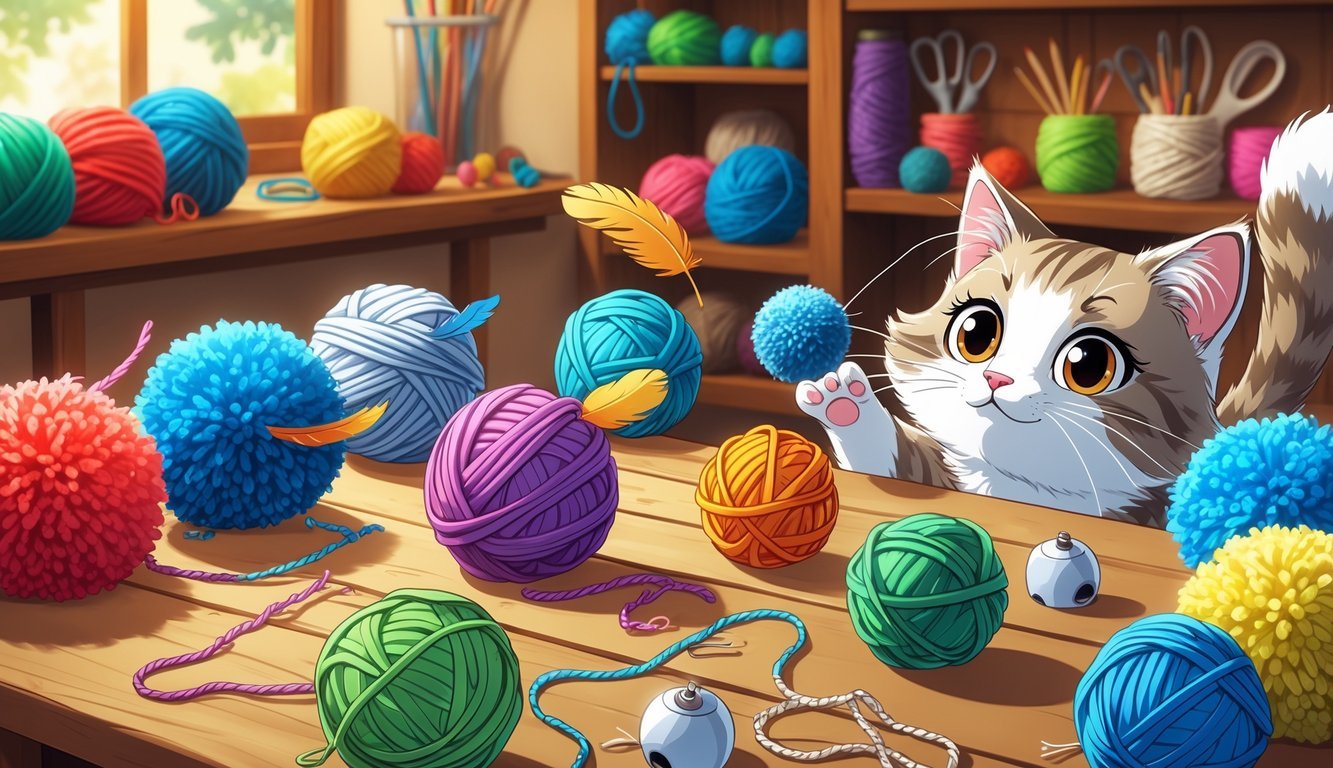
Leftover yarn? You can turn it into playful pom-pom balls. All you need is yarn and scissors.
Wrap the yarn around your fingers or a piece of cardboard until you have a thick bundle. Tie the middle tightly with another piece of yarn.
Cut through the loops on both sides and fluff the strands into a ball. Trim any scraggly bits to even things out.
Make pom-poms in a few sizes to keep things interesting. Smaller ones are light and easy to bat, while bigger ones roll a bit slower.
If you’ve got yarn scraps from other projects, this is a perfect way to use them up. Just make sure the knots are tight so the pom-pom doesn’t fall apart.
Keep some extras handy—cats love to lose their toys under the couch.
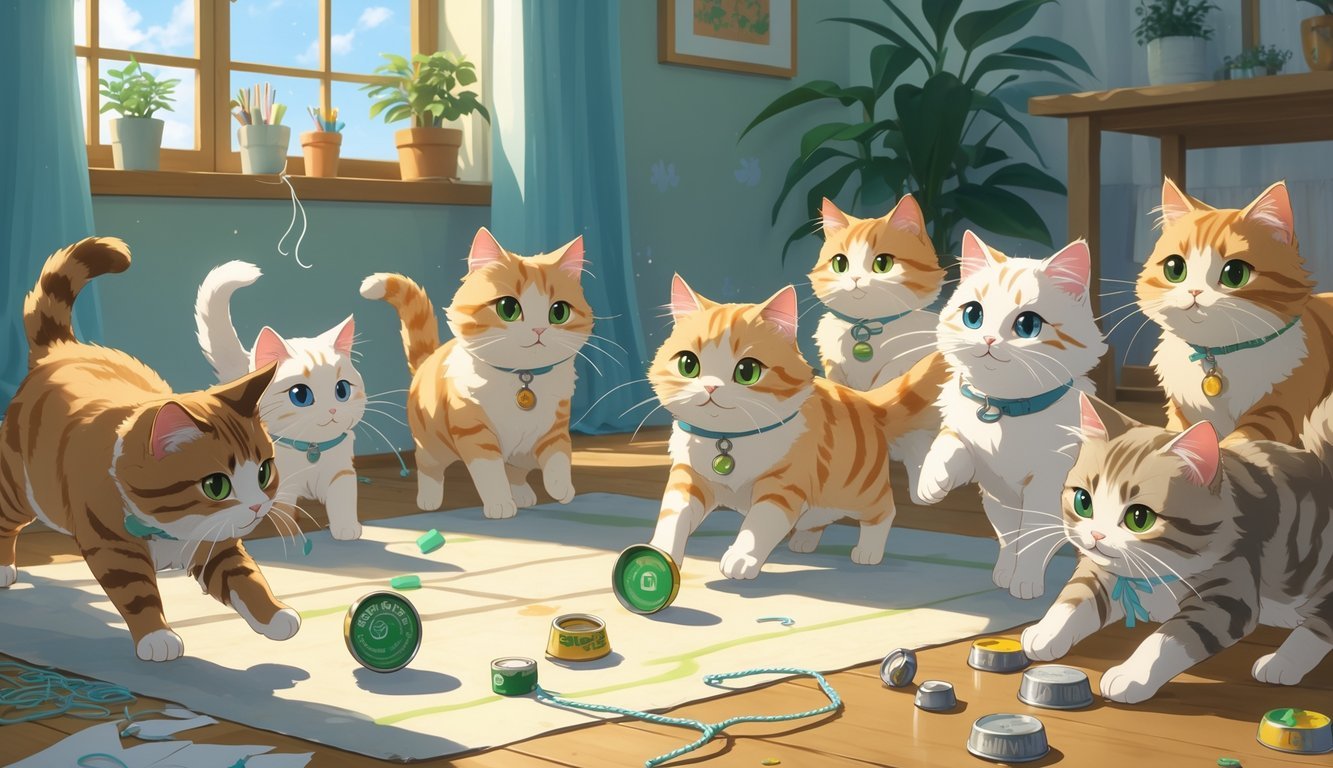
Plastic bottle caps can become a quick cat toy with almost no effort. Grab two or three clean caps from water or soda bottles, making sure they’re washed and have no sharp edges.
Put the caps on the floor and let your cat bat them around. Their size and lightness make them perfect for swatting, and they roll easily across smooth floors.
If you want to mix it up, tape two caps together. The toy gets a little heavier and rolls in odd ways, which keeps your cat guessing.
Watch your cat at first to make sure they don’t chew or try to swallow the caps. If a cap gets damaged, just toss it out and grab a new one.
It’s simple, free, and a nice way to reuse something you’d throw away anyway.

You can make a felt mouse toy with a few basic supplies: felt, thread, stuffing, and a little bell for sound.
Cut out two identical mouse shapes from the felt. Stitch them together around the edges, but leave a small opening.
Stuff in a bit of filling and pop in the bell. Finish stitching it closed.
Add felt ears or a ribbon tail if you want. Keep your stitches tight so nothing falls out during play.
You don’t need fancy sewing skills here. If you’re not into sewing, you can use fabric glue for the ears and tail.
Cats love batting these around and hearing the soft jingle from the bell. Since it’s felt, it’s soft enough for them to carry.
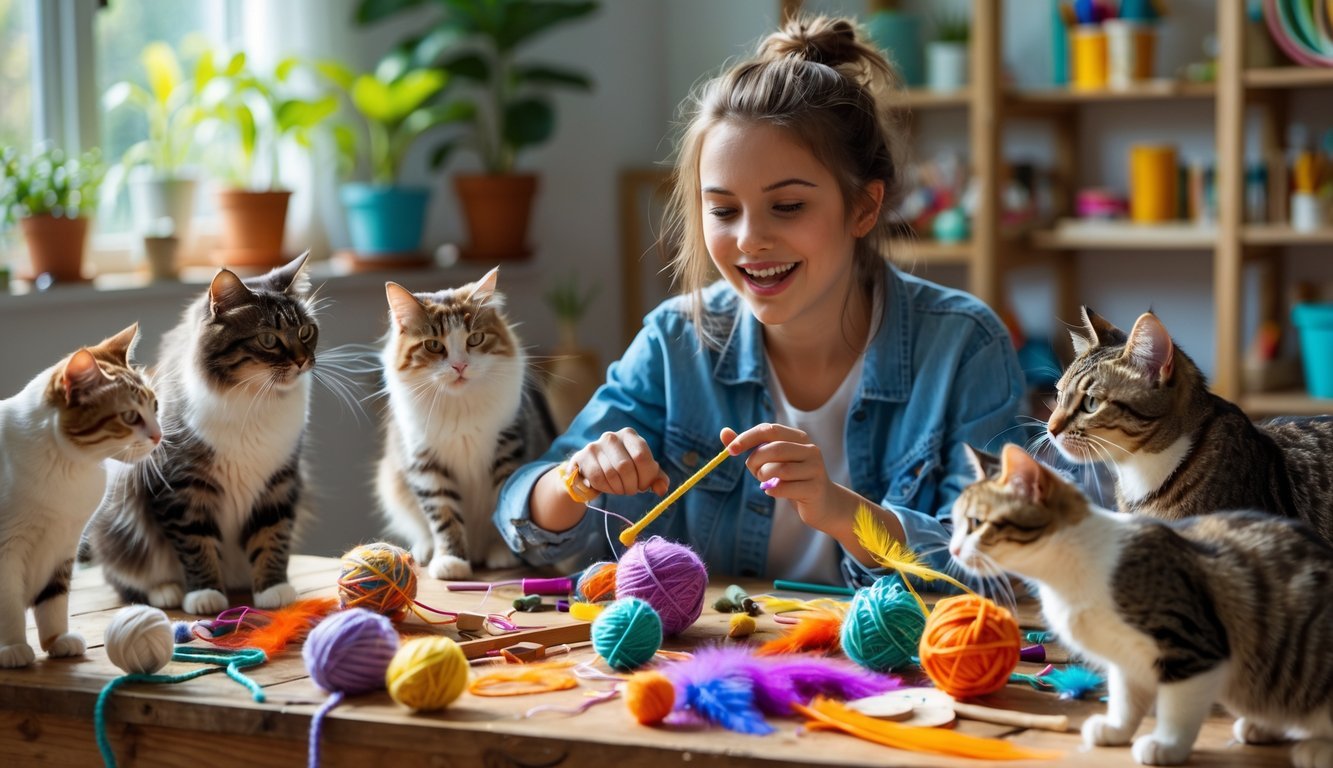
Playtime should be fun, but it has to be safe too. Choosing the right materials and the right size for each toy helps prevent accidents.
A few simple choices can make a big difference in keeping your cat healthy during play.
Pick materials that are non-toxic and sturdy. Cotton and felt work well because they don’t fray much and are gentle on claws and teeth.
Skip anything that can splinter, like hard plastic or wood. If you use string, ribbon, or yarn, secure it well.
Loose strands can tangle around your cat’s paws or neck, so thicker, braided cord is usually safer. For stuffing, stick with plain cotton or fabric scraps.
Avoid beads or foam, since they can break apart and cause problems if swallowed. If you add catnip, use just a little.
Ask yourself: Would this be safe if my cat chewed on it? If not, find something sturdier.
Size really does matter here. Buttons, bells, or beads can be swallowed if they come loose.
Try to keep toys larger than a golf ball to cut down on choking risks. If you want toys to make noise, use crinkle material inside fabric instead of small rattling pieces.
Check toys regularly for loose parts. If you spot frayed edges or missing bits, take the toy away and fix or replace it.
When in doubt, keep it basic. A cardboard ball or a knotted strip of fabric is often safer than something with lots of small parts.
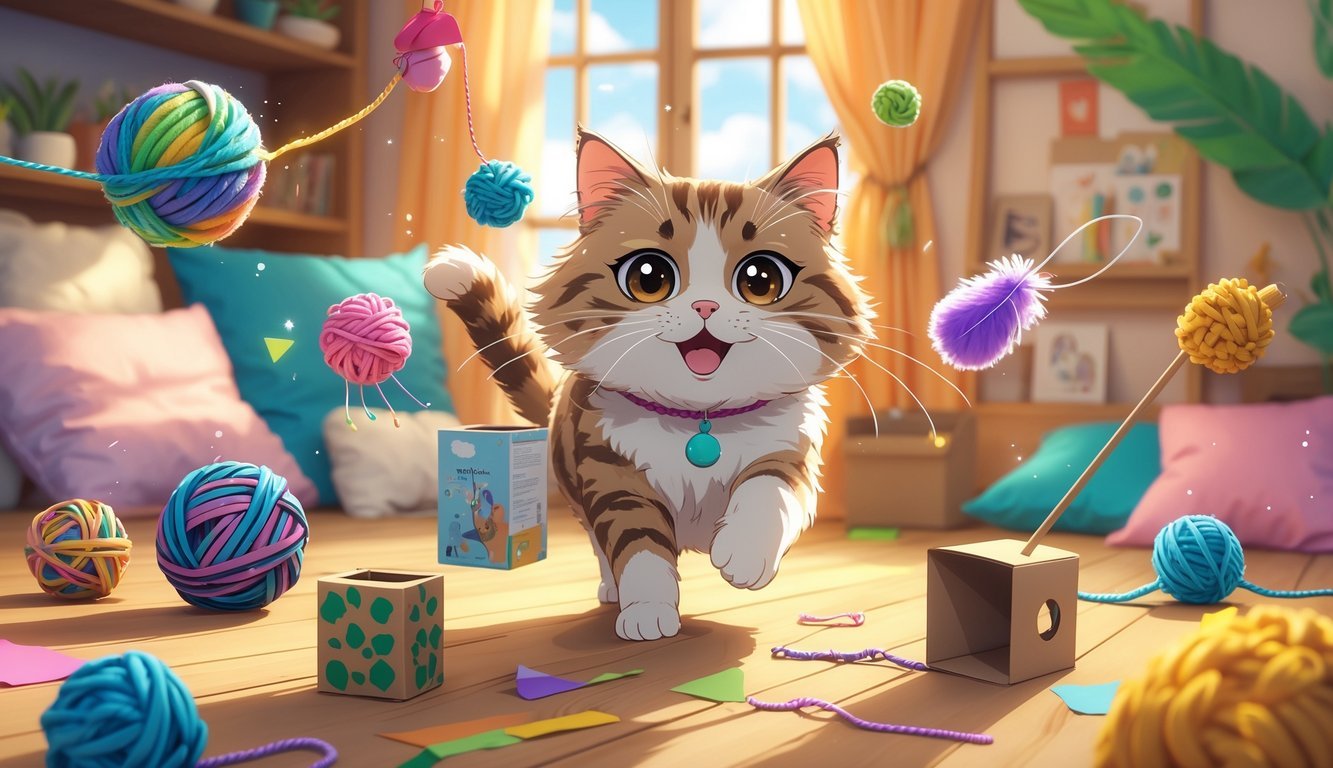
Keeping your cat happy at home means noticing what they like and changing things up now and then. Even small tweaks in how you offer toys can keep them curious and active.
Every cat plays differently. Some chase anything that moves, while others love batting at small things they can grab.
Notice what textures, shapes, or sounds your cat likes best. Maybe your cat gets excited by crinkly paper instead of plastic, or prefers toys to pounce on rather than ones that roll.
Try offering a few basic options at once. For example:
Watch what your cat goes for most. You’ll figure out pretty quickly what makes them happiest.
Most cats get bored with toys if they see them lying around every day. If you rotate their toys, playtime feels new and exciting again.
Try storing a few toys out of sight for a week or two. When you bring them back out, your cat will probably act like they’re brand new.
You could set up a simple rotation plan:
| Day | Toy Option |
|---|---|
| Mon | Cardboard box with holes |
| Wed | Paper ball chase |
| Fri | Treat dispenser roll |
Switching things up like this keeps your cat interested.
Rotating toys also makes it easier to spot damaged ones. You can pull out anything worn before your cat gets hurt.
Mixing up playtime like this really helps keep your cat active—and honestly, it just makes things more fun for both of you.